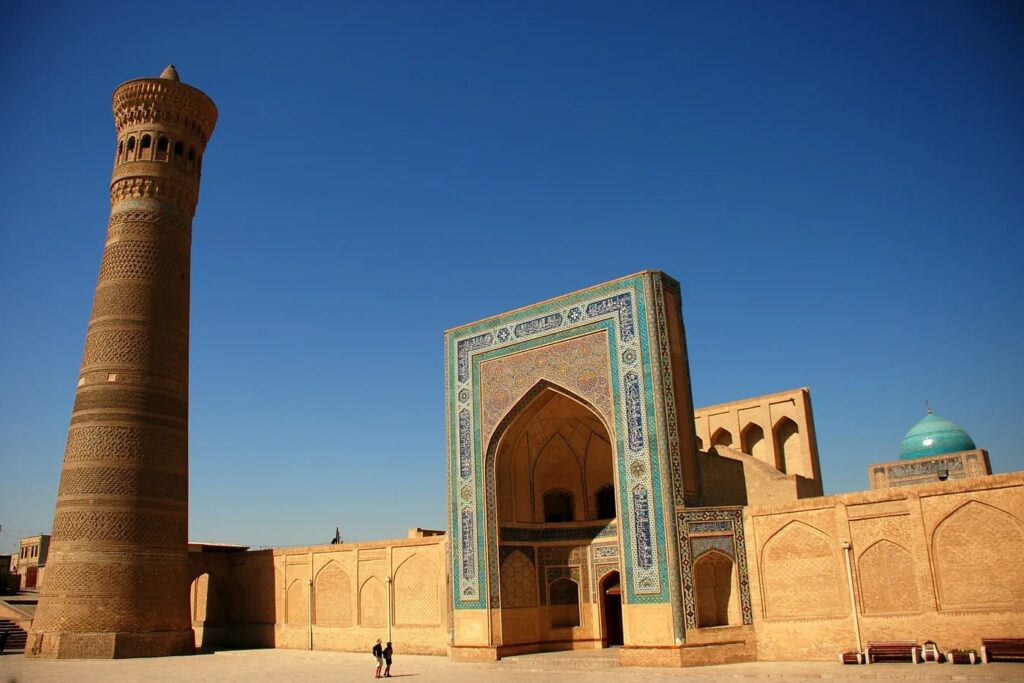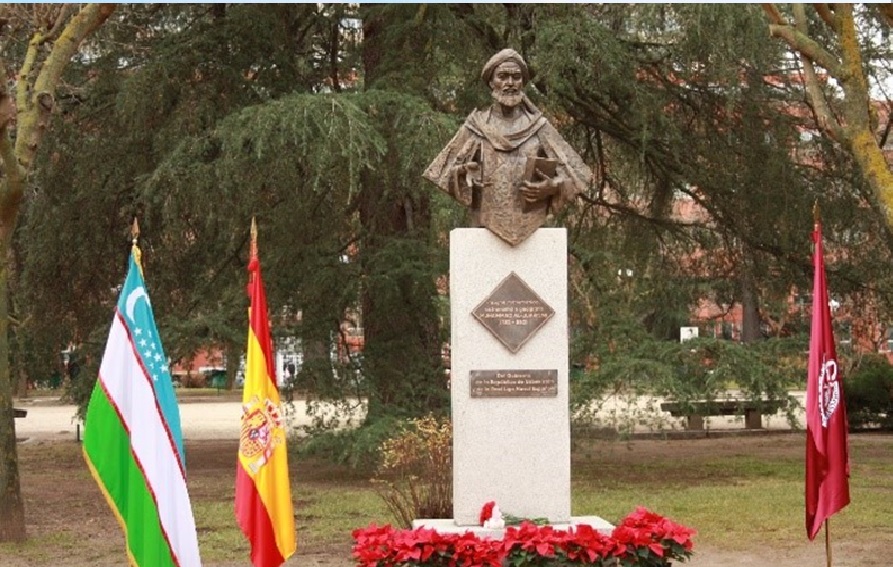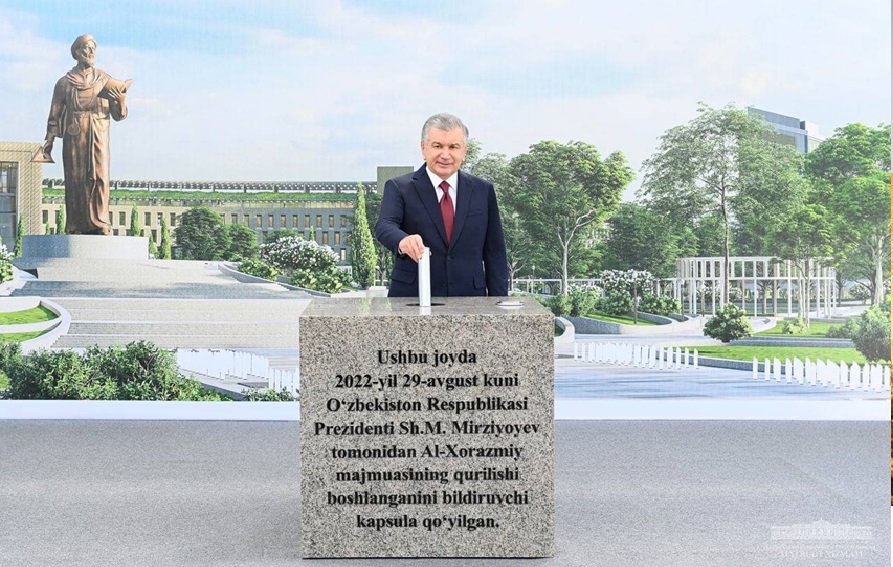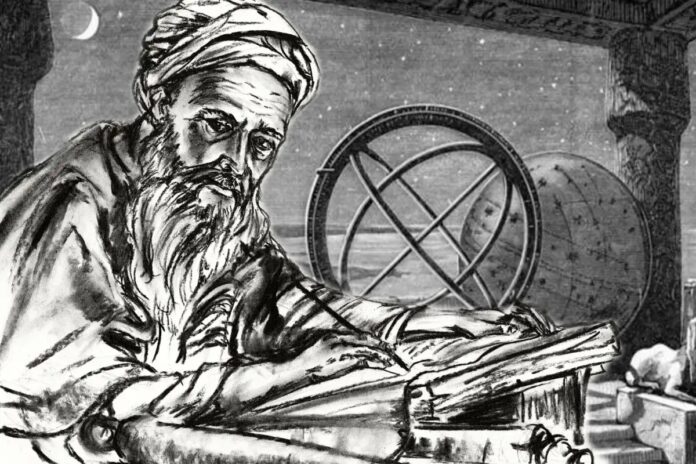By Dr.Beruniy Alimov
Al-Khorezmi (Al-Khwarizmi) was the first to introduce algebra as an independent science of general methods for solving linear and quadratic equations, and gave a classification of these equations. Historians of science highly appreciate both the scientific and popularization activities of al-Khorezmi. Al-Khorezmi’s works were translated from Arabic into Latin and then into new European languages. Various textbooks on mathematics were created on their basis. Al-Khorezmi’s works played an important role in the formation of Renaissance science and had a fruitful influence on the development of medieval scientific thought in the countries of the East and West.

President of the Republic of Uzbekistan Shavkat Mirziyoyev, speaking at the first summit of the Organization of Islamic Cooperation on Science and Technology in 2017 on September 10, said:
“It should be emphasized that the Islamic world can rightfully be proud of its invaluable contribution to world science and civilization. In particular, the territory of Central Asia was known throughout the world as the largest center of the Eastern Renaissance.

When we talked about this, first of all, with great respect and pride, we mention the names of the great scientist, the creator of the algorithm Al–Khorezmi; the scientist encyclopedist Al–Ferghani; Abu Rayhan Beruni, who made a significant contribution to the development of many sciences, including geodesy and mineralogy; Ibn Sino, known in the West as Avicenna; Mirzo Ulugbek is a statesman and a great astronomer.”
So let’s figure out who the great scientist of our country was and what he is famous for and why the entire scientific world of the globe honors him.
Abu Abdullah (or Abu Jafar) Muhammad ibn Musa al-Khorezmi (783-850) in Arabic means the father of Abdullah (or father of Jafar) Muhammad, the son of Musa from Khorezm – a scientist of the IX century from Khorezm, mathematician, astronomer, geographer and historian.
Thanks to him, the terms “algorithm” and “algebra” appeared in mathematics. Biographical information about him has hardly been preserved, it is only known that he was born at the end of the 8th century (presumably in Khiva), and died in the second half of the 9th century. The given years of life are conditional.
Al-Khorezmi belonged to those Central Asian scientists who were attracted to work in the capital of the Arab caliphate, Baghdad. There were many such scientists. Among the contemporaries of al-Khorezmi who lived in Baghdad, for example, the famous astronomers Abu Al-Abbas Ahmad Al-Fargani and Ahmad ibn Abdallah Al-Marwazi, known as Habash Al-Hasib. The first of them came from Ferghana, the other from Merv.
Baghdad was founded in the 60s of the VIII century by Caliph Al-Mansur of the Abbasid dynasty, who ruled from 754 to 775. The new capital of the state, which occupied a huge territory at that time, quickly became an important center of trade, science and culture. It was not easy to manage a huge state. The rulers of the caliphate realized that their economic and military plans could not be implemented unless the knowledge possessed by the conquered peoples was mastered. Therefore, the lords did their best to promote the development of science. A large scientific school arose in Baghdad, which attracted outstanding scientists from different countries. A library was created, replenished with valuable scientific works.


At that time, special attention was paid to the achievements of ancient Greek and Hellenistic science. The works of the classics of antiquity were collected and translated into Arabic. Special expeditions were equipped to purchase manuscripts.
Of particular interest were the exact sciences – mathematics, astronomy, geodesy, mathematical geography. The Euclid’s ELEMENTS, the Ptolemy’s ALMAGEST, Menelaus’ SPHERICS, etc. were translated. Indian astronomical writings were also studied. However, the Baghdad scholars of the VIII – IX centuries were not only translators and commentators. They also engaged in independent research and achieved remarkable results in various fields of knowledge.
The successors of Caliph Al-Mansur continued to patronize science. His grandson Harun Ar-Rashid, who ruled from 786 to 809, is known from the tales of the Thousand and One Nights.

The greatest flourishing of science in Baghdad was achieved under the son of Harun Ar-Rashid, caliph Al–Mamun, who ruled from 813 to 833. Under him, the House of Wisdom (Bayt al-Hikmah) was founded, an institution that performed the functions of the Academy of Sciences. The House of Wisdom housed a rich library of ancient manuscripts and an astronomical observatory.
Al-Khorezmi worked for many years in Baghdad, among other scientists of this academy. The famous historian of the 10th century, An-Nadim, reports that Muhammad ibn Musa, a native of Khorezm, was attracted to the “House of Wisdom” of caliph Al-Mamun. Until 813, Al-Mamun was governor of the eastern provinces and lived in Merv. It is possible that here he met with Al-Khorezmi, and subsequently invited him to Baghdad.
From the available information, it follows that in 809 al-Khorezmi served at the court of Khorezm Shah al-Mamun, and in 819, accompanying the enlightened ruler, who had become caliph by that time, he moved to Baghdad, the capital of the Arab caliphate, where he lived in the outskirts of Kattrabbul until the end of his life. In Baghdad, a scientist, by decree of Caliph Al-Mamun, takes over the reins of the famous “House of Wisdom” in those years, which would later be called the “Mamun Academy”.
In one of his writings, Al-Khorezmi praised Al-Mamun. He noted it: “the love of science and the desire to bring scientists closer to themselves, extending the wing of his patronage over them and helping them to clarify what is unclear to them and to ease what is difficult for them.”
The scientists who worked at the House of Wisdom made huge contributions to mathematics, astronomy and other sciences. For example, they measured the length of a meridian degree in order to clarify the size of the Earth’s circumference, found in ancient times. An arc value of 1° was found, close to the true one (111 km), where Al-Khorezmi also took part.
Al-Khorezmi’s diverse scientific interests concerned mathematics, theoretical and practical astronomy, geography and history. It is known for certain that the scientist was the author of 20 scientific papers, 9 of which were issued in full-fledged folios: 1. The Book on the Calculation with Hindu Numerals; 2. A short book of calculus on algebra and almukabula “Kitab al-jabr wa-l-mukabala”; 3. Handbook of Astronomical tables “Zij”; 4. The Image of the Earth “Kitab surat al-ard”; 5. A book about the construction of an astrolabe; 6. A book about actions using an astrolabe; 7. A book about a sundial; 8. A treatise on the definition of the era of the Jews and their holidays; 9. A history book.
However, only 7 books have survived to this day. Most often, these are translations of his works into Latin, less often, comments on the scientific works of Al-Biruni by Arab scientists, and very few surviving original manuscripts. It is difficult to overestimate the importance of these works for the development of scientific thought in the Middle Ages. For example, his works on arithmetic, set out in the “Book on Indian Counting” led to tremendous consequences in science in general and ancient mathematics in particular. And although the original text of the document has been lost, a copy of the XII century has been preserved, translated into Latin, from which it becomes clear that in this work the brilliant scientist for the first time gave a systematic presentation of arithmetic as a science based on the decimal system.
The translation of the manuscript begins with the words: “Dixit Algorithmi” – “Said Algorezmi”, however, very soon the author’s name in the Latinized form of Algorithmus and Algorithmus began to denote the entire system of decimal arithmetic in medieval Europe. Subsequently, the word “algorithm” began to denote any regular process that provides a solution to a certain class of problems in a finite number of steps. This is how the “algorithm” came into our lives, which later imperceptibly moved from mathematics to cybernetics.
In the book “Kitab mukhtasab al-jabr and wa-l-Mukabala” (A short book on the Calculus of Algebra and Al-Mukabala), the scientist presents six main types of equations and suggests ways to solve them. Using his term “Al-Jabr” in Latin transcription, European scientists began to define the science of solving quadratic and linear equations created by him, which eventually transformed into modern algebra.
The word Al-Jabr (replenishment) meant the transfer of a negative term from one part of the equation to another, and it was from this term that the modern word “algebra” arose. Al-Mukabala (juxtaposition) is the reduction of equal terms in both parts of the equation. The doctrine of linear and quadratic equations inherited from Eastern mathematicians became the basis for the development of algebra in Europe.
The geometric part of the treatise is devoted mainly to measuring the areas and volumes of geometric shapes (triangle, square, rhombus, parallelogram, called rhomboid, circle, segment of a circle, quadrilateral with different sides and angles, parallelepiped, circular cylinder, prism, cone).
Al-Khorezmi’s book about the astrolabe, the main instrument of astronomical measurements of that time, is also important. And even Al-Khorezmi’s geographical works are closely related to works on mathematics and astronomy. He is considered to be the first author to write an essay on mathematical geography – the geographical treatise The Image of the Earth “Kitab surat al-ard”. For the first time, scientists described the inhabited lands known at that time in Arabic. The work was accompanied by detailed maps with rivers, seas and oceans mapped on them, as well as the most important settlements. He had a strong influence on the further development of this science in the countries of the East. It is important that all the coordinates in the work were very accurate, because the writing of the geographical work was preceded by a long and painstaking work on calculating the length of the earth’s meridian.
For the first time, he described the inhabited part of the Earth known by that time in Arabic, gave a map with the coordinates of the most important settlements, with seas, oceans, mountains, and rivers. In many ways, he relied on Greek writings (Ptolemy’s Geography), but his The Image of the Earth is not just a translation of the writings of his predecessors, but an original work containing a lot of new data. He organized scientific expeditions to Byzantium, Khazaria, Afghanistan, under his leadership the length of one degree of the Earth’s meridian was calculated (very accurately at that time), but his main scientific achievements are related to mathematics.
Thanks to mathematical calculations, he carried out thorough calculations of the position of the Sun, Moon and planets during solar eclipses. For 700 years, the mathematical results obtained by al-Khorezmi remained unsurpassed in accuracy. The reliable model of the Earth created by him lasted the same amount.
This model has become the prototype of the modern globe. For such a significant contribution to mathematical science and its popularization, the world scientific community rightly nicknamed al-Khorezmi the “Father of Algebra”.
Paying tribute to the genius of the scientist, the famous historian of science George Sarton characterizes al-Khorezmi as: “the greatest mathematician of his time, and if you take all the circumstances into account, one of the greatest scientists of all time.”






